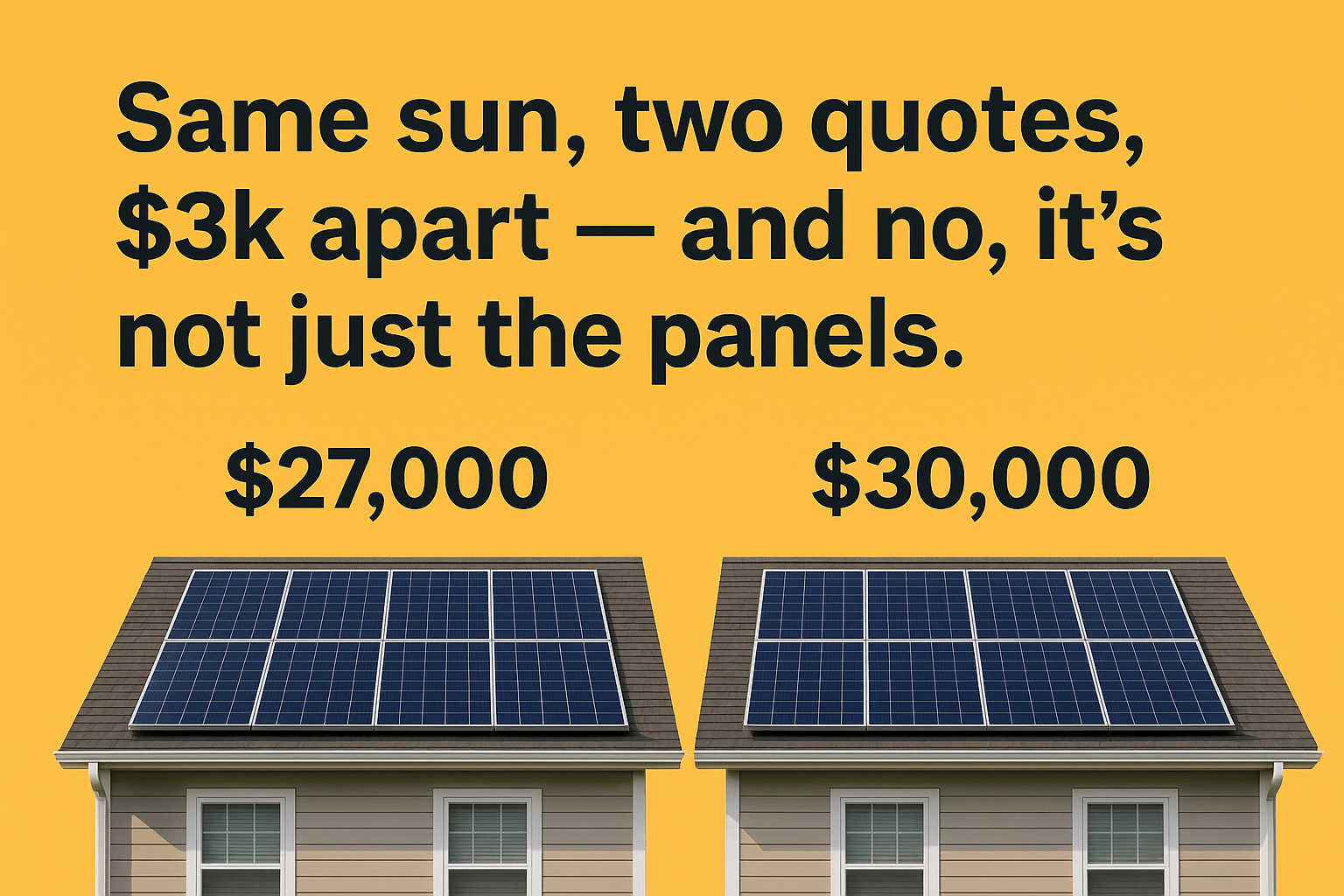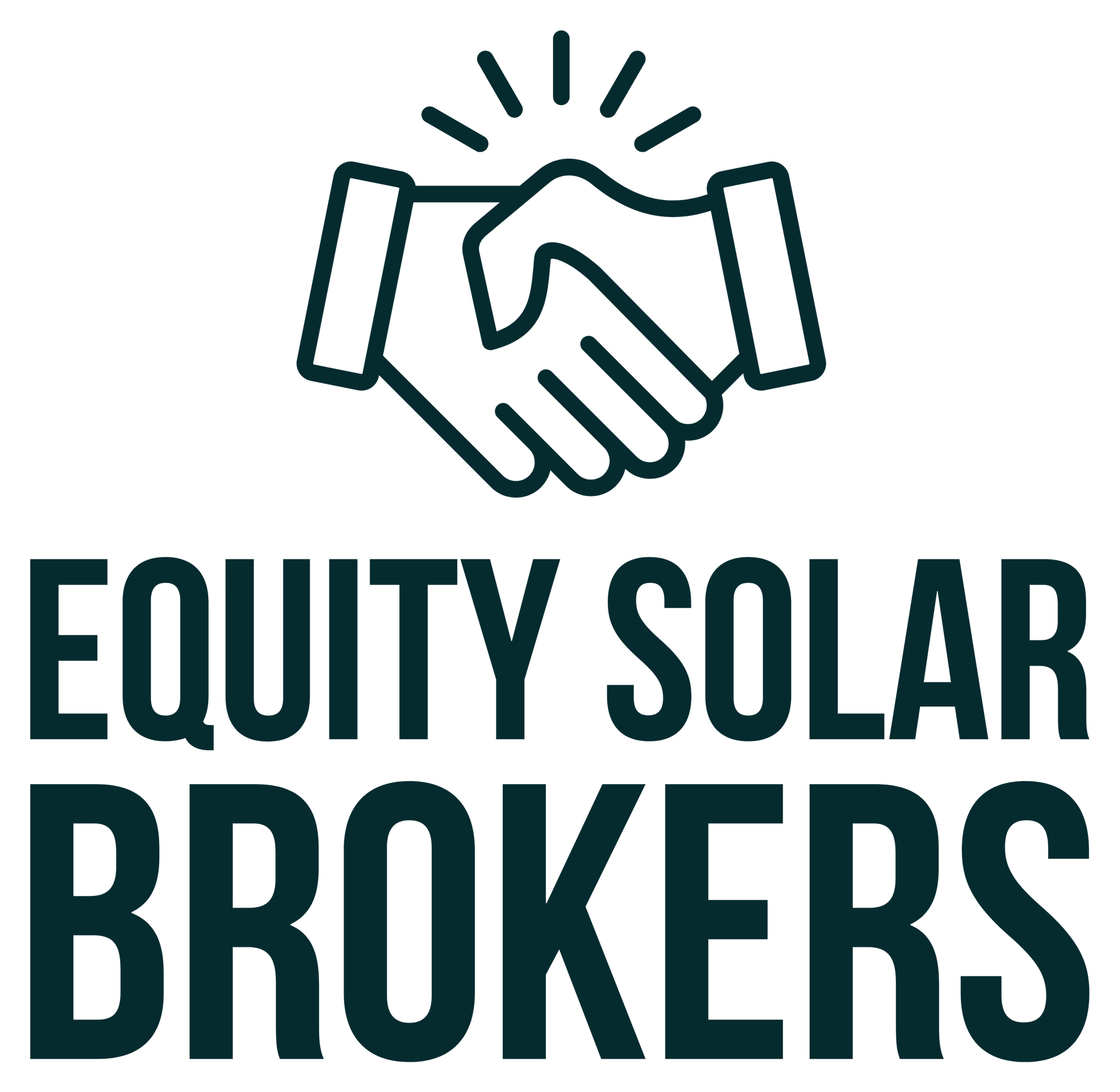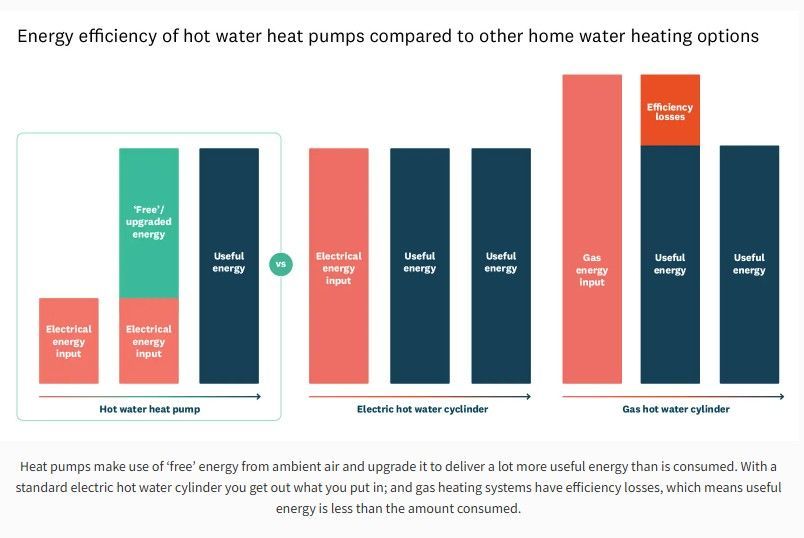Spoiler: it’s not just the panels. It’s the gear, the margins, the service backup, and sometimes… the size of your installer’s van fleet.

Ever looked at two solar quotes and thought, Why on earth is one $3,000 more than the other when they both promise sunshine on my roof?
Here’s the short answer: it’s the gear.
Here’s the longer answer: well… gear is just the start.
The Gear Gap
Solar quotes aren’t built equal. One installer might spec panels that cost them $100 each. Another might go for a premium panel costing twice that. Same goes for inverters and batteries.
The irony? The extra cost rarely buys you more features. These days, the bigger price tag usually boils down to:
- Reliability – The pricier product might have only 1 in 100 units fail under warranty. The cheaper one? Maybe 1 in 50.
- Customer Support – When something does go wrong, the higher-end brand might actually answer their phone.
- Looks – Yes, some buyers will happily pay more just because it looks sleeker on the garage wall.
- Brand Perception – Marketing magic. A bit like wine labels — the same grapes taste better if the bottle looks fancy.
Why Solar Companies Care More About Failure Rates Than You Do
Installers hate going back to fix things. It costs them money, pulls their crew off profitable jobs, and generally ruins their week.
That’s why they gravitate toward gear that has near-zero call-backs. But here’s the kicker: if you buy something with a “1 in 50 chance” of failure, you’ve still got a 98% chance of smooth sailing.
So when you’re staring at a $30,000 quote for the Rolls-Royce inverter and battery versus $27,000 for the Toyota Corolla version… the smart question isn’t “which is better?” — it’s what’s the risk worth to me?
It’s Not Just the Gear – It’s the Margin Game
This is the bit no glossy brochure will tell you.
Some solar companies run higher profit margins on every job, regardless of the gear. Others keep margins lean because they know the equipment is reliable and service calls will be minimal. Then there’s the third category…
- High margin on cheaper gear – Yes, it happens. You could be paying premium money for entry-level kit.
- Lower margin on premium gear – Some installers bank on efficiency rather than mark-up, meaning their “expensive” gear isn’t as overpriced as you think.
- The “overhead tax” – Higher prices don’t always mean higher profits. Sometimes you’re covering ballooned overheads: employed crews that work slower than subcontractors, the most expensive vans money can buy, or investor-driven growth that needs feeding.
Margins matter. Without knowing the breakdown, it’s easy to think a quote is “overpriced” when you’re really just paying for someone’s business model.
Sometimes Cheaper Gear Makes Sense
Here’s something that surprises a lot of people — sometimes, going for the “cheaper” inverter or battery is actually smart.
Why? Because the company behind it might be a big, stable player who’ll still be here in 10 years and will actually send someone out to fix it if it fails. Many larger installers are brilliant at supporting their gear, even if it’s not the most premium on the market.
And cheap doesn’t mean “bad.” Take SolaX and Goodwe. On most of their residential inverters, the startup voltage is just 40–50 volts. Compare that to some “high-quality” European brands that don’t fire up until the panels are pushing 80 volts. If all your panels face one direction, that’s fine. But if you’ve got 4–6 panels catching sunrise or sunset, that lower startup voltage could mean you get an extra 30 minutes of production each day.
We think it’s as simple as this: China is ahead of Germany in the most important metric — efficiency.
Global Warranty Support – The Gold Standard
Some brands offer global warranty support that’s hard to beat. Enphase, Tesla, SunPower — they don’t just cover the replacement part; they pay for:
- The labour to diagnose the issue.
- The freight to send the faulty unit back.
- The labour to install the replacement.
- Even the cost of disposing of the dead one.
If you value hassle-free ownership, this is a huge plus.
When 450W Panels Aren’t Created Equal
Ever noticed how every panel these days seems to be “around” 450W? Here’s the secret: the wattage number on the sticker doesn’t mean much in the real world.
The difference between a $200 panel and a $350 panel of the same wattage can be huge. On a perfect sunny day, the cheaper one might crank out 3kWh. The pricier one? More like 3.5kWh.
Why? Because there’s a whole cocktail of factors at play — temperature coefficient, voltage open circuit (VOC), bifaciality, N-Type vs. P-Type cells.
If you don’t want to spend 40 hours on Reddit or watch a guy in the Middle East poke panels with a voltage meter, the alternative is simple: buy from the most trusted brands in the industry. We’ll steer you toward them.
The Word on the Street (And Why It’s Sometimes Wrong)
In solar, reputations stick — even when they shouldn’t.
Take SolaX. They were one of the first to launch hybrid inverters and crack the nut on three-phase load balancing. Pioneers. But pioneering means teething issues, and in our industry, being first can get you dragged through the mud. Some installers wrote them off years ago and never looked back — even though the gear is now solid.
It’s the same story for Alpha or Pylontech. They’ve got strong offerings today, but for some, old perceptions die hard.
And yet… along comes SigEnergy, a brand-new player, and the industry embraces them with open arms. Go figure. Sometimes “word on the street” is just selective memory mixed with shiny-new bias.
How We Play Detective
Think of us like CSI for solar quotes — minus the sunglasses and crime scenes. We get under the hood of each proposal, working out:
- Is the equipment spec pushing the price up for the right reasons?
- Is the margin reasonable, or are you paying for someone’s fleet of luxury vans?
- Is “word on the street” actually relevant in 2025, or is it leftover industry gossip from 2018?
We do the digging so you don’t have to — because the right choice for you might be the “Corolla” with an extended warranty, or it might be the “Rolls” because you never want to hear the word “fault” in your life.
The Broker Advantage
We’re not here to crown a single brand as the best. We’re here to uncover the why behind the quote, so you can make an informed call.
Because the “right” solar gear isn’t always the most expensive. It’s the one that fits your budget, your risk tolerance, and your home’s needs — and that’s something no flashy marketing or single brand loyalty can give you.
And yes — we’ll tell you the stuff your installer probably won’t.



